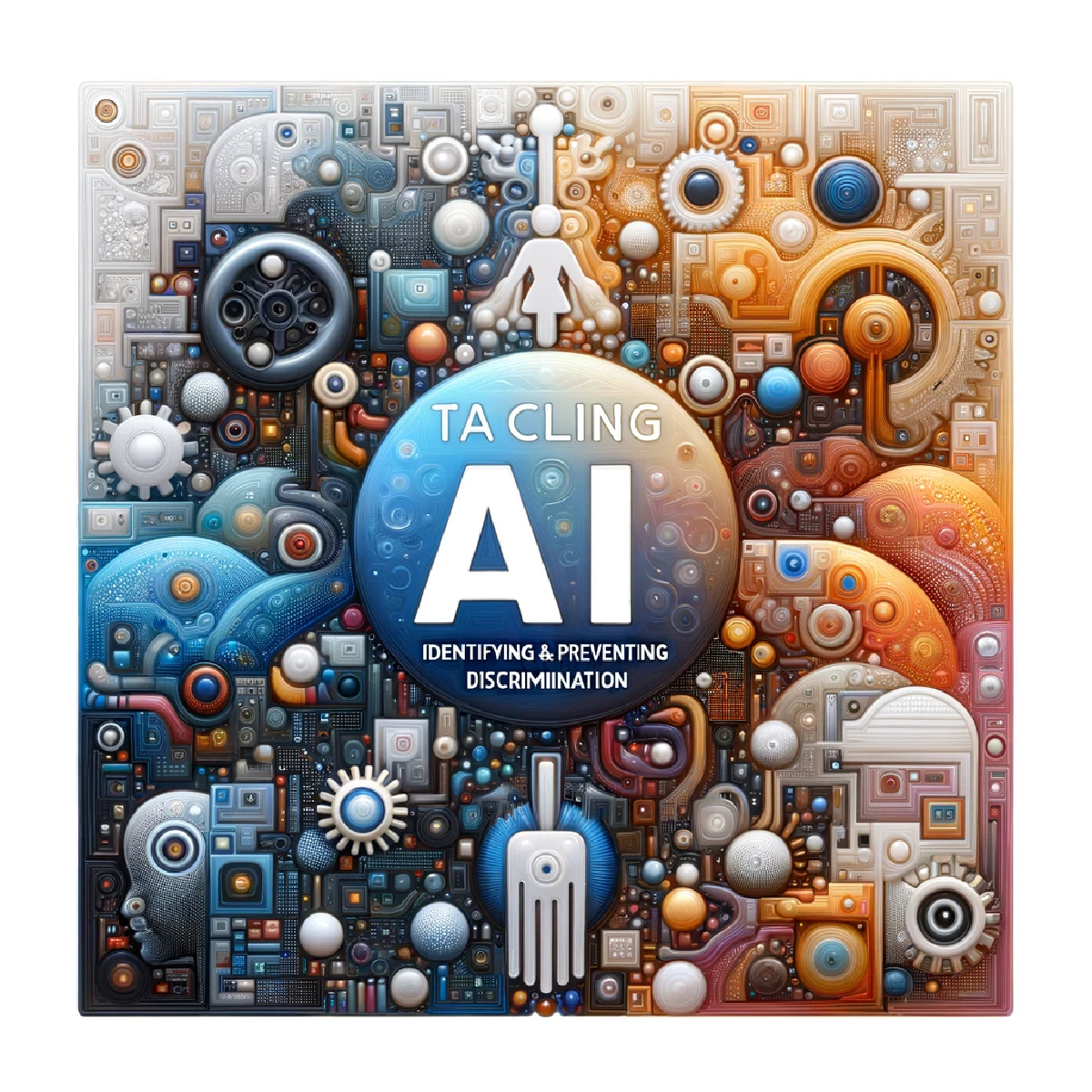
Tackling AI Bias: Identifying & Preventing Discrimination
13 Min read
Artificial intelligence (AI) has the potential to revolutionize numerous industries, but it is not without its pitfalls. …

In today’s fast-paced digital landscape, startups and enterprises strive to bring their innovative ideas to market swiftly while minimizing risk and investment. The concept of a Minimally Viable Product (MVP) within the Agile framework has emerged as a cornerstone strategy in achieving these objectives. In this article we will explore what is mvp in agile — laying the groundwork, defining core features, and aligning product development with customer needs
In Agile software development, a Minimum Viable Product (MVP) is a type of development when new product delivered with only sufficient features to satisfy early adopters. The final, complete set of features is only designed and developed after considering feedback from the product’s initial users. Conceptually - this is highly valued within Agile methodologies because it enables teams to maximize the efficiency of the development process by focusing on creating a product that includes only the most essential features.
Agile Mvp in a nutshell is:
graph LR
A(Define MVP Scope) --> B(Design and Develop MVP)
B --> C{Test MVP}
C -->|Feedback| D(Iterate Based on Feedback)
C -->|Satisfactory| E(Plan Next Phase)
Here are some key things to make sure your MVP project will be successful:
Use effective strategies to minimize time and create a strong feedback loop with stakeholders and users. Tools such as Sketch or Figma for UI/UX design, and crossplatform development frameworks like React Native or Flutter for mobile app development, can significantly accelerate the MVP development process. Don’t hesitate to use tools such as continuous integration and continuous delivery (CI/CD) pipelines automate the build and deployment phases, further reducing time-to-market.
Engaging with users early through beta testing or focus groups also plays a vital role. This direct feedback mechanism helps in quickly identifying any misalignment with user expectations and allows for swift iterations, ensuring the product evolves in the right direction.
Agile Alliance offers a wealth of resources ( Agile Alliance website) that can guide teams on best practices and methodologies to minimize time in delivering MVPs.
Cutting costs is a huge part of product development. Costs directly influence the success of both startups and enterprise products. Following agile practices - the creation of a Minimum Viable Product (MVP) serves not only to validate product ideas with real users but this is also as a strategic tool to manage and reduce development costs by removing redundant features.
Instead - the MVP approach focuses on developing a product with just enough features to attract early adopters and provide valuable feedback for future product development. This methodology allows companies to allocate their resources more efficiently, avoiding the high costs associated with developing features that may not meet market needs.
One of the key principles to consider - iterative but agile development process. Agile development encourages short cycles of development and small releases, which provides frequent opportunities to assess and adjust the project’s direction based on feedback and changing requirements. This flexibility guarantees minimization of the wasted resources on features that don’t align with user needs or expectations.
Leveraging lean methodologies, businesses are urged to scrutinize every feature and only invest in those that are absolutely necessary for the product’s core value proposition. This is not only cost-effective but also speeds up the development process, allowing companies to go to market faster and start generating revenue, which can then be reinvested into further development.
Reducing risk is an ultimate goal in development, particularly when constructing a Minimally Viable Product ( MVP). This approach ultimately aims to validate business hypotheses with the least effort, cost, and time, thus inherently minimizing risks associated with product development.
There are various ways how risks can be reduced while building modern software. It can be iterative development, continuous feedback from the end user or just clear prioritization. By breaking down the project into smaller, manageable units, teams can identify potential issues early and adapt quickly without significant losses. This flexibility is crucial for mitigating risks such as market misfit, technical challenges, or budget overruns.
We would like to accent that continuous feedback loops with real users are another key aspect. Launching an MVP allows the product team to gather data and insights directly from the target audience, reducing the risk of building features or products that do not sense
sequenceDiagram
participant A as Agile Team
participant U as User Feedback
participant P as Product Iteration
A->>+U: Launch MVP
U->>+P: Gather Insights
P->>+A: Inform Iteration
Prioritization plays a significant role in risk reduction. By focusing on the most critical features that solve key problems for users, teams can ensure that resources are used in wise manner. Use tools like the MoSCoW (must have, should have, could have, won’t have) and determine priority of the features based on user demand and potential impact.
Effective risk management in MVP development also emphasizes the importance of a well-structured backlog and clear communication within the developers. Using platforms like Jira or Trello ensures that tasks are transparent, priorities are clear, and everyone is aligned towards the common goal.
What is mvp in agile development? Or, better to ask - what are the common features for MVPs? Mvp meaning in agile is a synonym of the “the minimal set of functions”. It’s pretty abstract, but let’s start from high-level concepts and narrow down to the details.To understand the meaning - here is a little cheatsheet to use during the MVP development:
Answering these simple 4 questions will make you understand what are the required features
An MVP is characterized by its minimal set of functions, which are carefully chosen to meet the core needs of its initial user base. This minimalism is strategic, focusing on delivering a simple yet functional product that provides enough value to be useful while requiring minimal time and resources for development. The MVP approach allows developers to launch a product that addresses the primary pain points of users without the complexity or cost of a full-featured application
The viability of an MVP, or Minimum Viable Product, is a fundamental component that differentiates it from merely a prototype or a concept. Viability in this context means that the MVP must not only include the minimum necessary features for it to function but also achieve a level of performance that can satisfy early adopters. This is what makes an MVP suitable for release to the public—it’s not just a bare-bones prototype, but a functional version of the product that can stand on its own, deliver value, and generate useful feedback from real users
An MVP’s stand-alone nature is instrumental in validating business hypotheses with minimal resources. By being a self-sufficient product, an MVP allows companies to test it in the market without the need for additional components or dependencies. This stand-alone capability is essential because it provides a clear picture of how the product performs independently, helping businesses understand the market’s response to the core idea without the noise of additional features or services
Identifying what to include in an MVP involves understanding the problem your product is solving and identifying the most straightforward, direct way to solve it. Focus on core functionalities that address your users’ primary needs.
Clearly define the problem your product aims to solve. This clarity will guide all subsequent development
decisions.
Understand what solutions are already available in the market and identify gaps or opportunities for
differentiation.
Brainstorm possible solutions or features, then validate these ideas through user feedback or data analysis
The Agile methodology advocates for iterative development, which aligns perfectly with the MVP concept. The development progress through cycles of planning, execution, reviewing, and learning allows teams to adapt and refine the product based on real user feedback. Here’s a simplified process:
graph LR;
A[Plan] --> B[Build minimal set];
B --> C[Test & Collect Feedback];
C --> D[Analyze Feedback];
D --> E[Iterate or Pivot];
E --> B;
A common misconception about an MVP is equating “minimal” with incomplete or low quality. However, the aim is to build a solid foundation that fully serves its purpose. This foundation should be robust enough for users to understand the product’s value and for developers to learn and pivot as necessary based on user engagement and feedback.
Adopting a minimal function strategy within the MVP framework is fundamentally about maximizing value while minimizing waste. It’s a delicate balance that requires a deep understanding of user needs, thoughtful prioritization, and an agile, adaptive approach to development. Not only does this strategy help in validating product ideas with minimal risk, but it also sets the stage for more efficient scaling of the product based on validated user demands.
To ensure the MVP’s viability, developers can employ tools and frameworks that facilitate quick and efficient product development.
For example, consider a web application aimed at providing streamlined project management solutions - mvp in project management. The minimum version of this app would not need to include every conceivable feature related to project management, such as advanced reporting or integration with third-party tools. However, it should offer enough functionality to enable users to create projects, assign tasks, and track progress—effectively addressing the foundational need for organization and oversight in team collaborations.
As a stand-alone product mvp approach provides immediate value, appealing directly to early adopters. These initial users are essential, as they are more forgiving of imperfections and more likely to provide constructive feedback necessary for refining the product.
This approach gives a lot of agility. Startups can navigate the often unpredictable market landscapes with more confidence. It empowers them to make informed decisions about product direction based on actual user engagement statistics and feedback, rather than speculative market research.
Identifying and articulating the problem that needs solving is the cornerstone of developing a successful Minimum Viable Product (mvp in agile methodology). It forms the bedrock upon which all subsequent decisions, from feature selection to prioritization and development, are made. The Agile ethos of rapid iteration and feedback is best leveraged when the problem domain is well understood and clearly defined.
If you have decided to make the mvp agile development, it’s crucial to navigate the process with a strategic mindset to avoid common pitfalls that can derail the effectiveness and success of the product. Here are some key mistakes to avoid:
One of the frequent mistakes in MVP development is attempting to cater to a broad audience. This approach can dilute the product’s focus, making it less effective in solving specific problems for a targeted user base. Instead, MVPs should focus on a well-defined segment of the market.
Delaying the release of an MVP is another common mistake business owners make. The goal of an MVP is to hit the market quickly with a basic version of the product and gather user feedback ASAP. Fast deployment helps validate assumptions and pivot if necessary, based on actual user interactions.
Including too many features in the initial version can confuse the users and complicate the product development process. An MVP should include only those features that are absolutely necessary to address the core functionality and value proposition of the product. This not only speeds up the development cycle but also clarifies the feedback received, as it will be specific to the product’s essential features.
Underestimating the importance of user experience (UX) is a mistake. Even a product with limited features must provide a seamless and intuitive user experience. Poor UX can lead to user frustration, which might skew feedback and discourage early adoption. A focus on UX ensures that users can effectively engage with the product, providing more accurate and useful feedback for future development
The purpose of a Minimum Viable Product (MVP) is to launch a product with enough features to attract early adopters and validate a product concept early in the development cycle. In short words - minimize the amount of up-front development effort and gather user feedback quickly to iterate and improve the product.
Main benefits are: high level of flexibility, high level of the engagement of the stakeholder, fast time to market. Additionally: easy management of changing priorities and a focus on user needs and value delivery.
Agile methodology is often considered better than Waterfall for projects where requirements are uncertain or likely to change. Agile practices allow iterative and incremental development. Teams can quickly adapt to changes and deliver working software more frequently. Waterfall, being a more linear and sequential approach, is less flexible. This typically makes it difficult to incorporate changes once the project has started.
The best use case - when the project involves complex, uncertain, or evolving requirements. It is suitable for projects where innovation, speed, and flexibility are important. Agile is also beneficial when the project stakeholders wish to be closely involved in the development process, providing frequent feedback and adjustments.
Sprint MVP refers to the most valuable and functional version of a product that can be delivered at the end of an Agile sprint. It focuses on delivering a specific set of functionalities that are enough to provide value to the user and meet the goals of the sprint, enabling quick testing and feedback. This concept aligns with Agile’s emphasis on rapid, incremental development and continuous improvement.

13 Min read
Artificial intelligence (AI) has the potential to revolutionize numerous industries, but it is not without its pitfalls. …

12 Min read
Quantum computing and artificial intelligence (AI) are two of the most revolutionary technological domains that are …
Looking for a solid engineering expertise who can make your product live? We are ready to help you!
Get in Touch